Columns
Share with care
Strengthening resilience against information disorder is crucial before it muddies the whole waters.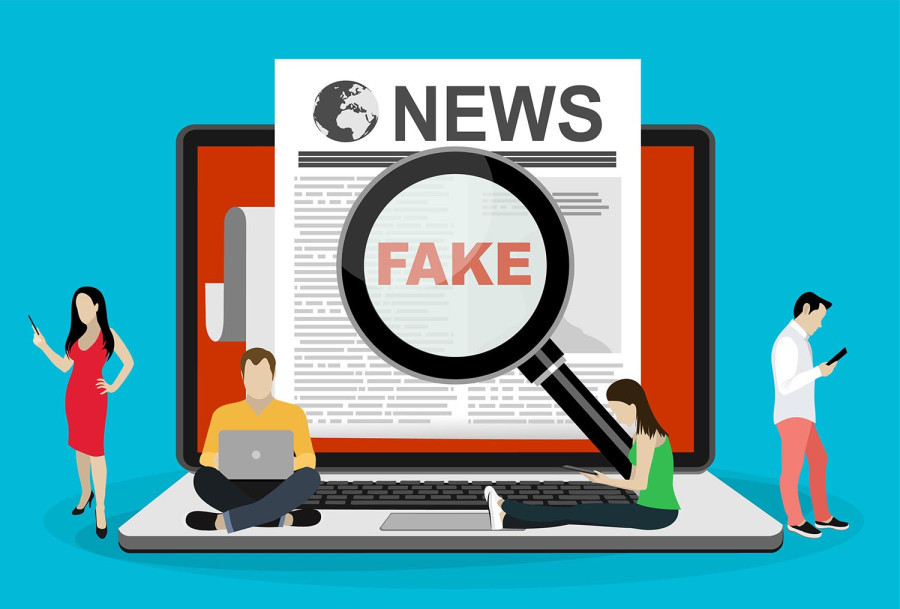
Ajay Das
In Nepal, where nearly half the population actively uses social media, the digital landscape serves as both a powerful tool and a perilous minefield. Misinformation, disinformation and online hostility spread rapidly, influencing public opinion and threatening social cohesion and democratic values. As digital platforms replace traditional media, navigating this complex information ecosystem becomes increasingly urgent.
Imagine waking up and finding the internet shut—no social media, no quick access to information, no news updates. For most of us, this would be as devastating as losing air or water. Over the past decades, the increasing penetration of the internet has brought about dramatic changes in how we produce, disseminate and consume news and information. With the change in the rules of the game and the role of traditional media, the information ecosystem is now beyond anyone’s control. News and opinions are no longer the exclusive domain of established media houses or broadcasters. Now, anyone with internet access can produce and share information anytime.
Online forums, social media channels and websites have become digital civic spaces where people discuss, share opinions, mobilise support for causes, organise collective actions and hold authorities accountable in a way that was previously unimaginable.
A double-edged sword
Digital tools have democratised media, giving voice to diverse and minority perspectives. However, this has also resulted in an overwhelming amount of content, much of which is unverified or biased, spreading at an unprecedented pace. Algorithms and personalised feeds shape what we see, often reinforcing factoids and creating echo chambers in social media, making it increasingly difficult to ensure accuracy, accountability and trust in the media landscape.
While digital platforms have empowered the general public, the picture in digital space is not rosy. It is gradually leading us into an era of information chaos. Misinformation, disinformation, hate speech, rumours, propaganda and manipulated content in legacy media—all contribute to a reality filled with false and misleading information.
The rapid pace of technological advancement is a double-edged sword. It has simplified life, democratised access to information and diversified communication methods. On the other hand, it also shapes the agenda and contributes to information disorder.
Why do we share without thinking
Exaggeration is fundamentally a part of human nature. The desire to showcase wealth, wisdom or beauty has been in human DNA since ancient times. Yet, technological advancements have further amplified this impulse, enabling it to reach a wider audience.
Social media channels thrive on the human urge to display oneself, share content and receive instant pleasure. People often share content without considering the potential impact of misleading information. The emotionally charged actions—' like,' 'comment,' 'subscribe, ' and 'share'—combined with clickbait posts on social media, significantly contribute to the virality of misinformation and disinformation.
Information disorder is not a product of digital or social media; they have existed for ages. One notable example is in the Hindu scripture Mahabharata. There is a direct instance of misinformation concerning the death of Guru Dronacharya. The false news of his son Ashwatthama's death, conveyed through Yudhishthira's cryptic statement and amplified by the chaos of the battlefield, ultimately led Dronacharya to surrender, resulting in his demise.
Similar references date back to Roman times when Mark Antony met Cleopatra, the Egyptian queen. Octavian launched a propaganda campaign against Antony to smear his reputation in Rome, portraying him as a womaniser and drunkard through slogans, images on coins and public speeches. This campaign cast doubt on Antony's loyalty to Rome; highlighted his association with Cleopatra; and his abandonment of Roman values. It helped Octavian consolidate power, enabling him to become the first Roman Emperor.
These anecdotes involved a few individuals, but today's context is vastly different. In the digital era, information is weaponised to sway public opinion. Misinformation thrives, often overshadowing facts with emotional appeals. The proliferation of misinformation, misleading factoids and deepfakes have emerged as a contemporary ailment, further exacerbated by the easy availability of artificial intelligence (AI) tools.
A digital battleground in Nepal
A recent unpublished study by BBC Media Action Nepal identifies social media as the primary source of misinformation and disinformation. According to the study, politicians, party cadres, political appointees, journalists, business and PR agencies, foreign actors, Nepali diaspora, social media influencers, and troll farms are the major sources and actors contributing to the information disorder.
Approximately seven in 10 people in Nepal use the internet daily, with Facebook and YouTube being the largest platforms, followed by TikTok. In the study, 86 percent of respondents expressed concern about the level of inaccurate and false information circulating in Nepal, with 46 percent feeling strongly concerned. Adding to these woes, hate speech and online harassment are equally prevalent. Citizens and policymakers are increasingly alarmed by information disorder, which is anticipated to grow with the use of AI-driven manipulation.
As the online space increasingly becomes a battleground and information disorder worsens, it often provides a pretext for governments to implement restrictive laws, heightened surveillance measures, repression, censorship and even internet shutdowns. This trend poses serious threats to freedom of expression and democratic values, all under the guise of maintaining law and order.
Building resilience together
Limited awareness about navigating false information, hate speech, harmful personalities and a popularity-driven mindset are two major factors fueling the spread of misinformation. Once online, we often find ourselves caught in a whirlwind of information chaos, making it easier for manipulators to influence public opinion. Concerns about information disorder are widespread, yet responses from both government and non-government sectors remain limited.
It is crucial to strengthen resilience against information disorder before it muddies the whole waters. Combating information disorder is a shared responsibility, as no one can remain completely insulated from the influence of social media.
A comprehensive and multifaceted strategy is essential to effectively counter the growing threat of information disorder. Developing a strong strategy focused on media and information literacy (MIL) is essential. Empowering people to identify and combat false information helps build a more informed and resilient citizenry. MIL initiatives should be innovative and utilise popular social media platforms where misinformation tends to spread quickly.
Collaboration is key. Governments, civil society organisations, media, the private sector and technology companies should join forces to create digital spaces that promote healthy civic engagement rather than societal divisions. Engaging social media influencers and partnering with big data and tech companies can significantly boost efforts to combat information disorder. Additionally, incorporating topics on information disorder into school and university curricula can establish a systematic approach to addressing these issues.
The ethical use of AI offers a promising opportunity. AI tools can detect and flag misinformation and disinformation in real time, allowing for quicker responses and promoting a healthier media ecosystem. However, this requires robust systems and policies to ensure that AI is used responsibly and transparently.
Local governments and elected representatives can be crucial in tackling information disorder. By improving their capacity to identify and address false information, particularly in both urban and rural municipalities, they can effectively curb the spread of harmful content at the community level.
Youth-led civil society organisations should also be empowered. They are crucial in nurturing a new generation of digital civic actors. These groups smartly use digital skills to promote a healthier media landscape and hold power to account.
Combating misinformation is not just the job of governments or tech companies. It is a responsibility we all share. By learning, questioning and sharing wisely, each of us can help build a digital world where truth thrives and democratic values flourish.




 10.12°C Kathmandu
10.12°C Kathmandu
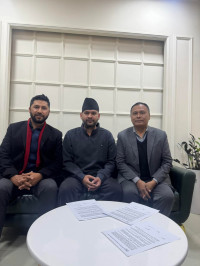
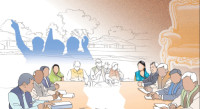
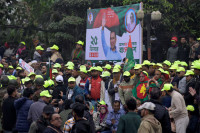







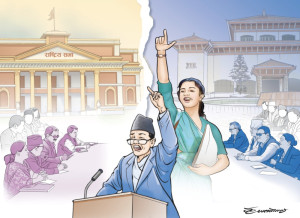


%20(1).jpg&w=300&height=200)

